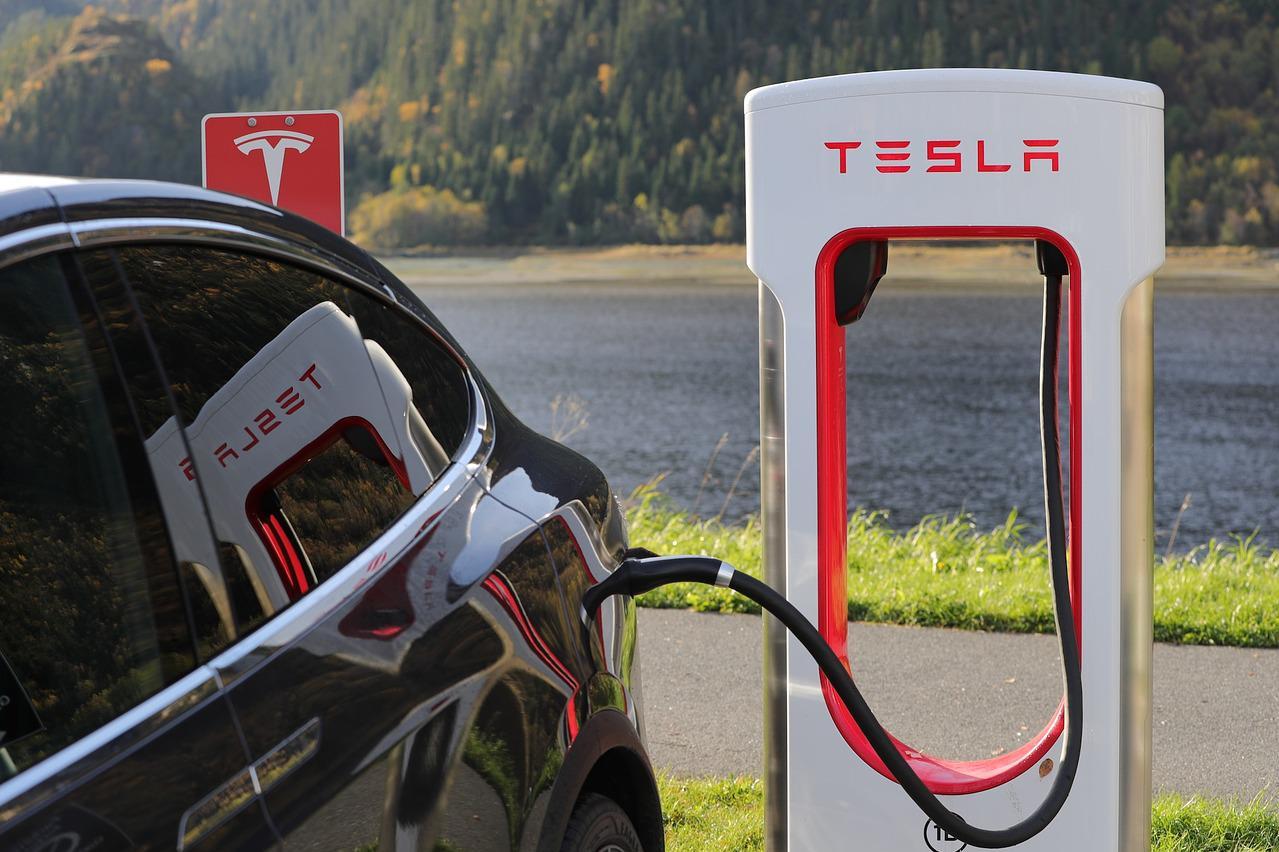Let’s Couple Net Zero with Net Resilience


If you’ve read TriplePundit, for much of its 15 years, you have grasped its distinctive word cloud: sustainability, decarbonization, carbon neutrality and, most recently, net zero. More than 700 of the largest global companies apparently have committed to a net zero strategy. That means they aim to negate the greenhouse gases they emit by reducing emissions, absorbing carbon or buying offset credits by some target year.
Climate volatility is here to stay
Fulfilling these net zero ambitions will prove paramount. Because, as the U.S. federal government notes, “Results from a wide range of climate model simulations suggest that our planet's average temperature could be between 2 and 9.7°F (1.1 to 5.4°C) warmer in 2100 than it is today. The main reason for this temperature increase is carbon dioxide and other heat-trapping ‘greenhouse’ gases that human activities produce.”
Of course, we already experience significant physical impacts from climate change. Indeed, the litany of events is old news: “In 2021, the U.S. experienced 20 separate billion-dollar weather and climate disasters, putting 2021 in second place for the most disasters in a calendar year,” behind only 2020’s total of 22 individual billion-dollar extreme weather events, as NOAA summarized earlier this year.
Some losses from these extreme weather events can be avoided or reduced with climate resilience — which explains why I suggest corporate leaders also consider a “net resilience” strategy. We must be creative here since resilience doesn’t have the elegant measure of a metric ton of carbon dioxide equivalent that undergirds the net zero key performance indicator behind those corporate commitments.
What would ‘net resilience’ look like?
Reduced deaths from extreme weather events. In 2021, 688 Americans lost their lives this way, and that’s likely an undercount since many deaths from extreme heat are not “coded” that way on death certificates.
Decreased property losses from river flooding, which is rising as the size and frequency of heavy precipitation increases. “Heavy spring rains across the nation in 2019 caused nearly 20 million acres of farmland to go unplanted. Farmers incurred, collectively, billions of dollars in losses, disrupting rural economies across the country as well as the communities they support.”
Lower property losses from wildfire. Among the long list of mega-fires, California’s 2018 Camp Fire – the world’s most destructive that year – destroyed 1,820 structures. “The total residential personal property losses, including homes, condominiums, and mobile homes, was estimated at $7.44 billion, or 88 percent of the fire’s total losses.”
Diminished losses of reservoir water due to heat and drought. “The Lower Colorado River, which provides water to Las Vegas, Los Angeles, San Diego, Phoenix, and Tucson, already faces a million acre-foot deficit linked to current changes in climate and is in danger of running dry far before the Pacific.”
Reduced property losses from hurricanes. With an above-average hurricane season predicted again this year after other recent above-average years, hurricanes and tropical storms have caused the highest insured losses in the U.S., including nearly $40 billion in 2021.
Lower cases of Lyme disease, an insect-borne disease that is spreading due to climate change. About 35,000 new cases are being reported annually but more than 10 times that many are diagnosed and treated each year and aren’t recorded because of a hiccup in the reporting process.
Reduced number of deaths from extreme heat. Heat is historically the top weather-related killer in the U.S.
The checklist for arriving at net zero
Adopting net resilience will require bold actions. The list is long, yet we all should consider how we can contribute to embracing such initiatives as:
Changing laws and construction practices related to where and how we develop to prevent repetitive property loss.
Moving families from harm’s way and increasing affordable housing options in communities that receive those migrating families so that they gain safety, security and stability even as climate change increases uncertainty and instability.
Installing more sustainable infrastructure to mitigate further minor flooding and extreme heat.
Improving stormwater infrastructure, particularly combined sewer and stormwater systems in America’s older cities.
Increasing mental health services to address the stress and strain of growing losses on communities.
Growing appropriate crops in the appropriate geographies — i.e., those that can handle increasing temperatures and more rain when we don’t need it, less when we do.
Increasing knowledge about the urban heat island effect among medical professionals, first responders, employers and the general public to reduce unnecessary heat deaths.
Installing distributed energy generation systems to back up utility-scale power sources impacted by extreme weather.
Being good water stewards and setting priorities for the best use of water as supplies dwindle.
Achieving ambitious net zero targets and engaging more leaders to make and achieve these commitments since the more greenhouse gases we emit, the more difficult it will be to achieve Net Resilience.
Join me in a net resilience movement to rival net zero: a rivalry where everyone wins by creating safer, more secure and more stable communities.
Image credit: Johannes Plenio via Pexels
How NAF and American Express Prepare Students for the Future of Work


Critics often point out that current educational models are failing to prepare high school students for the workforce and its future. In fact, one third of young people around the world reported that their college or university fell short in equipping them with skills required for their desired roles. And, evidence suggests at least 79 percent of youth have developed skills outside of their formal education to obtain the roles they wanted. American Express, however, says one its partnerships helps to tackle this problem.
A long, successful partnership with American Express
There are numerous challenges to ensuring effective skill development and gainful employment for younger generations. To that end, in partnership with American Express, the nonprofit NAF says it offers a solution. The mission of this 35-year-old partnership is to bring a more connected and holistic high school experience to students in preparation for the future of work. To date, over 90 percent of NAF academy students reported being ready for the workforce due to the work-based learning experiences acquired at their respective academy. And till now, American Express has invested more than $24 million in NAF with the aim of ensuring U.S. students are career ready.
"American Express does step in and help to make sure that we are able to do everything we can to support our students as best we can and they've been just a tremendous partner," said Lisa Dughi, NAF’s CEO, in an interview with TriplePundit. "The reason the partnership has lasted for 35 years is their ability to continue to work with us and ensure that at the end of the day student success and student outcome is the driver, nothing else."
Additionally, the American Express Foundation supported NAF's Academy of Hospitality & Tourism (AOHT), which currently is present in 18 states and hosts close to 19,000 students.
The importance of building an interconnected educational experience
Dughi explained to 3p the integrated approach NAF adopts when helping students envision their future careers. NAF creates curricula that fits into a student’s goals as they are learning both specialty core subjects. She described to 3p the integrated approach with the example of a student reading Life of Pi in an language art class, building the boat featured in the book in engineering class and brainstorming which materials would be available during that period of time during a history class.
Misguided career expectations are among the challenges to achieving success for teenagers. Data reveals that 47 percent of 15-year-old boys and 53 percent of 15-year-old girls expect to work in one of only 10 jobs by the age of 30. And, teenagers from disadvantaged backgrounds often have narrower interests and lower levels of career concentration compared to teenagers in countries with strong career guidance and education of other career fields. “…the results show that the career expectations of young people have changed little over that period. If anything, they have become more concentrated in fewer occupations,” wrote the authors of the 2020 OECD study.
These expectations are a result of lack of resources, knowledge about careers and skills and adults’ attitudes towards youth’s abilities. In addition, current educational models generally do not emphasize team-based projects and problem solving, and are often underfunded or understaffed.
More direction, knowledge and opportunities are needed to build an interconnected educational experience. And, Dughi told 3p that the experience offered by NAF is crucial for the success of high school students because it enables "real world experiences.” According to Dughi, the majority of students don't acquire these experiences in traditional high schools. Yet, by obtaining an education at NAF, students can envision what their future would look like, which specific skills and capabilities are required accordingly and what leadership looks like. In addition, Dughi explained that students exit the NAF experience with existing relationships with businesses and different types of work-based learning experiences such as internships. And, this allows for multiple career trajectories.
Preparing students for the future of work is a compelling business investment
There are many benefits for students who engage with the work force while still in high school. In fact, students who combine part-time employment with full-time studies are likely to acquire higher wages, opportunities to pursue apprenticeships and have greater contentment with their career growth.
Students aren’t the only beneficiaries of work-based learning experiences. Companies who invest in its materialization benefit as well. "When we do work with partners, this isn't just about philanthropy, this really is a business investment in the futures of the companies that we work with,” said Dughi. She further explained to 3p that NAF is building a “diverse talent pipeline” of professionals who can become future leaders and solve problems of companies. These problems include the inability to find certain skills, talents and diversity in leadership roles.
So far, this non-profit’s strategy is proving fruitful. According to Dughi, NAF has been receiving positive feedback from students and their families for its academies. Specifically, students have shared with NAF how transformational their work-based learning experiences have been for them and their families. Dughi stressed the benefits of these experiences which includes the opportunity to be valued by adults, be paid for their work, and support and mentorship opportunities. And this creates a sense of pride and strength for students.
"We want to make sure that every kid has the opportunity and access to a successful future," said Dughi. "We need to do more, and we need more partnerships and investment in this kind of work to make sure that we are able to create that opportunity for many, many more students."
Image credit: Yan Krukov via Pexels
Editor's note: This story has been updated to reflect American Express' cumulative investment in NAF.
Beyond the Midterms: How Social Impact Builds Long Term Allies


As Americans prepare to return to the ballot box for the midterms this November, political strategists and media figures are heralding a Republican takeover of the House. In preparation for the pendulum swinging to the right, many in Washington, D.C. are already taking their feet off the gas when it comes to engagement with Democrats, paying less attention to the issues they view as important to the left.
This is a mistake.
In late 2021, ROKK Solutions, in partnership with Penn State's Smeal College of Business and Center for the Business of Sustainability, explored public opinion on environmental, social and governance (ESG) issues across 1,240 registered voters and found that, despite popular narrative to the contrary, a majority of voters on the left and right alike care deeply about issues that impact society: 75 percent of Democrats and 52 percent Republicans agree that climate change is at a crisis level, and 62 percent of voters agree that diversity and inclusion efforts are a priority (68 percent Democrats, 52 percent Republicans), just to name a few. What’s more, bipartisan support for these areas dramatically increases among Americans under the age of 45.
Debunking the myth that issues related to ESG are highly polarized on its own is a pretty good reason for companies to keep their feet on the social impact gas, but it’s not the only one. As we move into the midterms election season, smart businesses should prioritize long-term relationship building across the aisle.
In periods of divided government, the likelihood of major legislation that disrupts bottom lines becomes smaller. This seemingly quiet time gives companies an opportunity to prioritize strategic engagement as well as the momentum to build alliances with those who share their values. Highlighting community impact for Members of Congress and their staff is one way to make the most of divided government and position an organization for long-term success, no matter who is in the majority. For example, sharing environmental efforts with political stakeholders who are prioritizing climate policy and finding ways to support their proposals over the next two years will help create long-term allies who will be in a position to support business when the pendulum swings again.
As many companies already know, though, political stakeholders are not the only ones to consider when it comes to social impact. The activist community is increasingly vocal on issues related to environment and social equity, and if history is any indicator, will become more so if Republicans take the House of Representatives this fall. Organizations that are already pressuring companies to take clearer stands on ESG issues are working to up that pressure, and if Democrats lose the House as expected, this community will view their corporate campaign as especially important.
In the wake of George Floyd's death and the Georgia voting rights bill, a number of companies were name checked by groups like the NAACP and SEIU. Our research indicates that voter expectations of business response to external social issues like these will only continue to grow as younger generations enter and lead the workforce and increase their purchasing power. This trend, combined with an intensified activist push on business to make ESG progress, means that companies may find themselves in the hot seat at any point after the midterms if they miss opportunities to publicly engage on their social impact efforts.
If these risks and opportunities are not enough to convince organizations to continue building their ESG profiles through impact-driven initiatives, perhaps the most fundamental argument for action is. So much has been written about the so-called triple bottom line, but research from Impact ROI hammers home the importance of social responsibility to business imperatives. According to them, organizations that adopt best practices in the ESG space enjoy a number of financial benefits, such as outperforming peers in the stock market, increasing sales by as much as 20 percent and reducing employee turnover, among many others.
There is clearly much to gain by prioritizing ESG in 2022 and beyond. By engaging early and often with consumers, policy makers and other issue stakeholders, smart businesses have an opportunity to build their reputation for the long term and advance their policy goals beyond just the midterms.
Interested in having your voice heard on 3p? Contact us at [email protected] and pitch your idea for a guest article to us.
Image credit: Pixabay
After the Buffalo Shooting, This Family-Run Company Sets a High Bar for CSR


A Delta Sonic Car Wash on Delaware Avenue in Buffalo, NY
In the last two years, there have been incidents of racial violence that have startled the senses, outraged the masses, and even inflicted emotional stress and pain at a personal level. Two incidents, in particular, have shocked the senses of any reasonable person and driven society as a whole into moral camps of either righteous indignation, or indifference to hate — one being the murder of George Floyd at the hands of a white police officer, and the other the hunt-and-kill execution of Ahmaud Arbery by three white men. Now, the Black community is coping with the aftermath of the recent Buffalo shooting.
Once again, with the slaughter of ten Black people by an angry white man on May 14 at the Tops Friendly Market in Buffalo, New York, we are individually and collectively forced to examine our personal and public commitment to denouncing racism. Suddenly, corporate social responsibility (CSR) is not an embellished proposition that shows off to shareholders, employees and the community, but a test of authenticity and fortitude on the part of corporate leaders.
The proof of authenticity and fortitude is evidenced by a company’s robust public denunciation of evil and support for equality, or failing to do either.
How has your corporation or organization responded to the killings at the Tops Friendly Market?
Editor's note: Be sure to subscribe to our Brands Taking Stands newsletter, which comes out every Wednesday.
A local family-owned business in Buffalo, New York, provides a model for the type of CSR blithely sworn to but not as often practiced. The Benderson Family opened the first location of Delta Sonic Car Wash in 1967. There are now 32 locations in three states (one of which is shown above).
“The tragic events of [that] weekend affected all of us,” said Kim Allen, marketing director for Delta Sonic. “We have a location less than five miles from the Tops supermarket. Our customers and employees live, work and shop in this neighborhood. We waited to see what the needs of the community would be and then determined how we could help the most.”
Within a short time after the Buffalo shooting, it became apparent that the neighborhood, which lost access to its only local grocery store, needed alternative sources of food. In anticipation of an increased burden on local nonprofits to bridge the gap, Delta Sonic made a $100,000 donation to the local food bank, FeedMore WNY, earmarked for residents who frequented Tops Market to help mitigate the expense of travel for groceries and higher prices elsewhere.
It should be noted that this represents socially-informed giving at its best — providing for an immediate need with direct assistance to those most affected by the tragedy.
Compound the tragedy of the Buffalo shooting in this neighborhood by the reality of food insecurity that many impoverished Black people face. In 2020, 24 percent of the U.S. Black population experienced food insecurity — more than three times the rate of white households. Black children are almost three times more likely to live in a food-insecure household than white children. Black people, especially Black women, are more likely to be essential frontline workers and more likely to work in the industries hardest hit by the pandemic.
Seventy-eight percent of the population in the Tops neighborhood of east Buffalo is Black. The shooter specifically chose this location for that reason. The average income in this area is less than $20,000.
Allen gave TriplePundit an overview of the company’s ongoing local philanthropy, even before the Buffalo shooting made headlines nationwide.
“We work with lots of local organizations and charities with everything from donating services to raising money and making monetary donations," she said. "In Buffalo specifically, we annually partner with Roswell Park Cancer Institute, FeedMore of WNY, Make-A-Wish, Visually Impaired Advancement, Variety Kids and Oishei Children's Hospital. All year we run month-long roundup campaigns for local charities. Currently we are supporting Mental Health Advocates of WNY, and last month was Lyme WNY [a Lyme disease awareness organization], just to name a few.”
Where others may hesitate to lend their businesses’ names and reputations to the muddy waters of fighting racism for fear of treading on sensitive ground and ensuing backlash, Allen said the response from Delta Sonic’s employees and the community to the company’s donation after the Buffalo shooting has been overwhelmingly positive.
“We are getting very positive feedback from both our employees and customers," she said. "They feel supported and confident that we care about them and the community. It is important that they know we stand against racism and all forms of violence. We also had shirts made for our employees to wear to show additional support. They read: ‘Buffalo Strong,’ and ‘Buffalo - The City of Good Neighbors.’”
But in addition to the public display of T-shirts and the generous donation is the message of corporate philosophy and beliefs that Delta Sonic soon posted to its Twitter account and corporate website. It’s a powerful enough message of full-throated endorsement for equality and the rejection of racism that it bears reprinting here, and perhaps will serve as an example for others.
“Buffalo is The City of Good Neighbors. We reject racism and hate. Our hearts ache for the victims of the senseless violence that took place Saturday and we offer compassion and support for their families, friends and everyone affected by the shootings.
“As a community we must counter the immeasurable pain that has been inflicted with vast and endless amounts of love. Diversity is a strength to be celebrated. Bigotry is a sickness to be eradicated.
“As a result of this tragedy, families may be struggling to access food in the area where the tragedy took place. Delta Sonic is donating $100,000 to FeedMore WNY to help meet this need. Let’s all work to help bring light, peace and hope to those who are hurting.
Now would be a good time for corporations to examine their environmental, social and governance (ESG) statements, and the authenticity of their messages in support of equality and against racism. In terms of CSR, and being answerable to our own consciences, perhaps this tragedy in Buffalo is an opportunity for corporate leaders to respond to both with renewed fervor.
Image credit: Delta Sonic Car Wash via Facebook
Like it or Not, ESG Reporting is Here to Stay


Critics of the corporate social responsibility movement finally had their moment in the sun this week, after the S&P 500 index of companies ranking high on the ESG (environmental, social and governance) scale declined to include the well-known automaker Tesla. That may seem ridiculous, considering that Tesla is a manufacturer of zero-emission cars. However, the S&P decision underscores the importance of viewing ESG reporting through a holistic lens.
The importance of a holistic perspective
In an article for the World Economic Forum published earlier this week, a trio of analysts with the firm KPMG described some of the key issues involved in ESG reporting.
They note that ESG reporting is a relatively new field that is still sorting through transparency issues and grappling with thorny analytical challenges, such as measuring Scope 3 emissions.
In addition, they maintain that ESG investors currently do not have a wide field from which to pick:
“Much of the current crop of ESG/sustainable funds are, arguably, standard trackers minus fossil fuel-heavy companies. True impact investments — which aim to have a positive effect on people and the planet — are thin on the ground, with few options for investing in ‘brown’ businesses transitioning to ‘green.’ Indeed, the business case for impact investments has yet to be clearly established.”
That point about excluding fossil fuel-heavy companies goes to the heart of the Tesla issue. The roots of ESG reporting are partly in the area of sustainability reporting, which does focus heavily on carbon emissions and other forms of pollution. From that perspective, Tesla should be an ESG shoo-in.
However, as demonstrated by the S&P decision, a narrow focus on pollution avoidance does not guarantee a high ESG ranking.
ESG reporting and corporate culture
ESG reporting also represents a step up from the traditional culture of corporate giving, though it does not necessarily conflate corporate culture with executive leadership.
Take the case of the leading global software firm Oracle, which has established a high-ranking ESG reputation. “Oracle’s corporate citizenship efforts are steadfast, clear-eyed, and effective. We’re proud that our greatest assets—our people and our technology—change lives for the better, every day,” the company states.
Oracle also emphasizes its commitment to sustainability, explaining that “at Oracle, we know that sustainability is good business. We continually invest in initiatives that help us run our business more sustainably and develop products and services that help our customers do the same.”
By some ESG metrics, Oracle is doing all the right things. The company performs relatively high on the cumulative ESG rankings published by CSRHub and other organizations. In particular, it earns a high score from the Human Rights Campaign, which ranks workplaces based LGBTQ inclusion.
Editor's note: Be sure to subscribe to our Brands Taking Stands newsletter, which comes out every Wednesday.
On the other down side, earlier this month Bloomberg Law reported that “Oracle Corp. and its senior leaders, including billionaire chairman Larry Ellison, must face class action litigation over claims they misled investors about the financial health of the tech giant’s cloud computing segment.”
“The suit accuses Oracle’s leaders of attributing its cloud sales success to sustainable business practices when in fact it was the result of tactics that produced only short-term revenue boosts,” Mike Leonard of Bloomberg Law explained.
That may dim the picture for some ESG investors, even if the lawsuit does not have an impact the company’s overall financial performance.
In addition, Ellison’s avowedly “libertarian” politics and public support for former U.S. President Donald Trump may have soured some ESG investors on the company prior to the failed insurrection of January 6, 2021. New revelations about Ellison’s role in the events leading up to the insurrection may be the last straw for some, but others will continue to be attracted by the company’s formal ESG metrics.
Commitments, not only ESG reporting, drive action
As illustrated by Oracle, ESG reporting scores do not necessarily reflect the legal, moral or ethical standards of corporate leadership. However, they do raise expectations, as illustrated by Disney, another company that scores relatively high on ESG rankings and those from the Human Rights Campaign.
Despite its high ESG ranking — or perhaps because of it — Disney faced a withering barrage of criticism earlier this year after corporate leadership failed to speak out against Florida’s “Don’t Say Gay” bill. When the company finally responded, state legislators clapped back with new legislation apparently intended to punish Disney while intimidating other corporate leaders into silence.
Instead of backing down, Disney doubled down. Last week the company moved forward with a planned rebrand of its “Rainbow Collection” merchandise as the “Pride Collection,” in time for launch during Pride Month.
Disney could have downplayed the rebrand in order to cultivate a more favorable legislative environment in Florida. Instead, the company chose to follow an in-your-face pathway. The official Pride Collection website displays large, glowing rainbow lettering to list each of the company’s beloved icons of pop culture, with “Pixar Pride,” “Marvel Pride,” and “Star Wars Pride” included alongside “Disney Pride.”
In addition, Disney has announced that it will donate all Pride Collection profits during Pride Month to a group of LGBTQIA+ organizations.
“I’m proud to share just a bit about what we are doing for the LGBTQIA+ community and to joyfully celebrate Pride not just for the month of June, but all year-round,” Disney's senior VP of global marketing, Lisa Becket, wrote in a May 16 blog post describing the rebrand. “We’ll also be highlighting inspirational and celebratory stories about our guests, cast and community on the Disney Parks Blog and across our social media channels."
What’s all this about Tesla?
As for Tesla, the raising of expectations has thrust the company into the ESG spotlight. According to S&P, its performance just didn’t match up. In a May 17 blog post explaining the methodology behind the fourth annual rebalancing of the S&P 500 ESG Index, S&P senior director and head of ESG indices for North America, Margaret Dorn, singles out Tesla for particular criticism.
“But, how can a company whose self-declared mission is to ‘accelerate the world’s transition to sustainable energy’ not make the cut in an ESG index?” she asks.
Answering her own question, Dorn takes Tesla to task for not keeping pace with ESG progress among its peers in the auto industry, particularly in the areas of carbon strategy and codes of conduct.
In addition, Dorn cites unresolved racial discrimination issues at the company’s factory Fremont, California, along with issues related to deaths and injuries linked to its autopilot vehicles.
“While Tesla may be playing its part in taking fuel-powered cars off the road, it has fallen behind its peers when examined through a wider ESG lens,” she concludes.
Tesla CEO Elon Musk has cried foul over the exclusion, but Dorn’s critique rings true.
Musk is probably lucky that Dorn declined to pursue the point about accelerating the transition to sustainable energy even farther.
After all, Musk’s own SpaceX venture is awash in greenhouse gas emissions and environmental impacts related to its test site in Texas. In that context, Tesla is not the planet-saving hero it is made out to be. It is just another carbon offset in a world that urgently needs action, not empty promises.
Image credit: Blomst via Pixabay
Another Retailer’s Employees Are Forming a Union: What’s Going On?


A pro-union rally in San Francisco, CA, July 2021
If you've ever worked for a retailer or in food service, you know that the days can feel long, the work hours that generally pay low wages are both inconsistent and irregular, and of course, the customers can be insufferable. The pandemic exacerbated the inequities many retail, foodservice and warehouse workers had already experienced, as they were most at risk of getting sick from COVID-19 while the rest of us could work comfortably from home. For many, the response has been simple: unionizing.
“We all kick around between the same crappy retail jobs,” Sarah Pappin, a Starbucks organizer, recently told CNBC. “This is the moment where we’ve all realized that it actually kind of sucks everywhere, so let’s just make a stand at one place and prove it.”
Now, count in another popular retailer that is facing unionizing efforts.
Earlier this month, employees at a Trader Joe’s in Hadley, Massachusetts, notified the company that they planned to form a union. Citing slashed benefits, stagnant wages and ongoing safety concerns, the employees’ letter to the company’s CEO, Dan Bane, reads: “With the same instinctive teamwork we use every day to break pallets, work the load, bag groceries, and care for our customers, we joined together to look out for each other and improve our workplace together.”
Editor's note: Be sure to subscribe to our Brands Taking Stands newsletter, which comes out every Wednesday.
Last century’s labor movement was marked by the growth of established unions and the formation of new ones, including the AFL, CIO (which merged with the AFL in the 1950s), United Mine Workers, United Auto Workers and United Steel Workers of America. In contrast, many of today’s unionizing drives — including the one at the Hadley Trader Joe’s — are independent in nature. Such strategies are similar to the formation of the union at an Amazon warehouse in Staten Island, New York, which also isn’t affiliated with any of the large nationwide unions. Other unionizing activities, including at some Apple, REI and Starbucks locations, are affiliated with larger unions such as the Service Employees International Union (SEIU) and Workers United.
In the big picture, these unionizing efforts may appear to be relatively minor. But a recent NPR analysis of data from the National Labor Relations Board (NLRB), the government agency with which workers have an option to start the unionizing process, tells a different story. A decade ago, less than 4 percent of union election petitions came from the foodservice and accommodation sectors. This year, they comprise more than 27 percent of such NRLB petitions. It’s not necessarily blue-collar workers in heavy industries, nor educators with master’s degrees, who are seeking to form unions: Now, wage earners in the foodservice and retail sectors are also demanding a say in their compensation and working conditions.
“Workers have cited the pandemic as a major impetus for organizing, saying their companies did not do enough to protect them from the risks of COVID or reward them for carrying on with the work that has made their companies highly profitable over the past two years,” NPR labor and workplace correspondent Andrea Hsu observed.
Many of these companies that are experiencing unionizing drives have sterling corporate citizenship reputations — and often rank high on various corporate responsibility, ESG (environmental, social and governance) and “best places to work” indices. Nevertheless, the checking of various boxes on these surveys and any resulting high scores do not necessarily explain the reality out on the floor, nor behind the scenes in a kitchen. It’s clear that at many companies, corporate “sustainability” isn’t carrying over to workers’ rights and their dignity — and many of them have quite simply had enough.
The companies within which these employees are unionizing certainly have the resources, including attorneys who are well-versed in bucking unionizing efforts. But that doesn’t mean the deployment of such tactics is a good look for big companies and their executives: Public sentiment is on these workers’ side. In 2009, when the U.S. was in the midst of the “Great Recession,” unions only scored the approval of 48 percent of Americans, according to Gallup. Last summer, that number stood at 68 percent, the highest in Gallup’s annual polls since 1965.
Image credit: Patrick Perkins via Unsplash
Seneca Nation’s Journey to Bring Energy Sovereignty to Indigenous Communities


Photo: a solar project on Seneca Nation land
One company is changing the way Indigenous communities interact with energy companies. Helping communities become owners of their energy assets and doing so in an environmentally responsible way is the mission for Seneca Solar.
Indigenous communities have long cast wary eyes at energy companies for good reason
Indigenous communities and energy producers have for a long time not always seen eye to eye. Harm to natural environments, desecration of sacred grounds, pollution of water sources, and endowing landowners an unequitable share of profits are just some of the reasons that Indigenous communities and leaders might look skeptically at proposed energy projects.
Massive protests to the Dakota Access Pipeline (DAPL) in 2016 and 2017 captured the world’s attention as members of the Standing Rock Sioux Tribe protested the route of the pipeline form North Dakota to Illinois, claiming it threatened vital water sources and sacred sites.
Protests continue in Northwestern Canada over two pipelines passing through Indigenous territory. The UN has since expressed concerns with Canada’s dismissal and eviction of “land defenders."
Fears persist in Australia over the desecration of sites sacred to First Nations communities. The 2020 destruction of Juukan Gorge, and newly proposed expansion of natural gas projects in Western Australia threaten traditional lands.
The stories are much the same worldwide. From Russia to Brazil to the DRC, Indigenous lands and communities are exploited by a whole range of actors, but fossil fuel giants are one of the major culprits.
Seneca Solar wants to change the relationship that Indigenous communities have with energy projects.
What is Seneca Solar?
Seneca Solar is a company owned wholly by the Seneca Nation. The company, which has been in development for about one year, is engaging in climate-related activities that can deliver earth healing solutions – solar powered energy being its primary focus.
Seneca Energy, the tribal utility company of the Seneca Nation, already has four solar projects installed on tribal land, which have produced at least 8.27 million kWh of solar energy.
Seneca Solar is looking to expand beyond Seneca Nation territory. Its primary goals are to rapidly increase the capacity of renewable energy worldwide, and to bring energy sovereignty to historically underserved communities.
“What we’re trying to do in our work with Indigenous groups around the world is change that relationship by helping them develop and own high-value renewable energy assets,” said Vice President of Seneca Solar, Matt Renner, speaking to TriplePundit about the relationships between Indigenous communities and energy developers.
Those relationships have long been problematic, benefiting communities only so long as there are resources to extract. When the resources are gone, so are the benefits. Providing communities with the ability to own and develop their own renewable energy projects can bring benefits spanning generations.
Governments warming to the renewable energy transition
Focusing Seneca Solar’s efforts on clean, renewable energy sources addresses not only the issue of exploitation, but also the pressing climate emergency. With scientists reporting that climate change is extremely likely (more than 95 percent) to be human induced, and the leading cause of greenhouse gases is the burning of fossil fuels, urgent action is needed to restore the health of the planet.
Seneca Solar wants to increase the access that historically underserved communities have to clean sources of energy and support their engagement in the post-fossil fuel economy.
Its expansion into markets throughout the United States and beyond, however, is largely dependent on state policies surrounding solar and renewable energy.
“In our federal system, it’s really a patchwork – we’ve got some states that are leaders on renewable energy, and we have some that are very much laggards. The main difference in the industry now from 5 years ago is the economics are there now, where solar plus battery systems can outcompete natural gas in many cases on price alone,” said Renner.
Governments worldwide are expected to reduce their subsidies to the oil and gas industry in the near future, transferring that money to investments in cleaner, renewable sources of energy. At the U.N. Climate Change Conference (COP26) in Glasgow in November 2021, the U.S., U.K., Canada, and 30-plus other countries pledged to end funding for fossil fuel projects abroad by the end of 2022.
With the renewable energy market set for massive growth in the coming years as countries and corporations slash their emissions in order to comply with climate targets, Seneca Solar is placing itself at the forefront of accelerating the energy transition. At the same time, it is helping to reinvent the frayed relationship between Indigenous communities, energy producers, and the global economy as a whole.
Image credit: Seneca Energy
World Central Kitchen is Now the Largest Food Relief Operation in Ukraine


One month into the Russian invasion of Ukraine, the United Nations’ Food and Agriculture Organization warned of impending food shortages across the country.
Speaking to the number of people who may currently be starving in the country, David Beasley, executive director of the U.N.’s World Food Programme, told CBS News in the beginning of May, “You gotta assume that millions are at stake right now. We're reaching about 2 million already. We hope to scale up to 4 million in the weeks ahead and 6 million beyond that.”
Delivering 25 million meals to Ukrainians
In a situation of such great need, World Central Kitchen (WCK) has deployed hot meals, grocery kits, shelf-stable packs and meal vouchers, to name a few examples meeting the needs of the people of Ukraine who have either fled the country or for whatever reasons have had to stay put. The relief organization began its involvement exactly one day following the invasion on February 24. Since then, it has delivered 25 million meals to Ukrainians, becoming, as WCK recently announced in a blog post, “the largest food relief operation in Ukraine.”
“It's a very simple thing when you're a cook. When you're hungry, you gather the food, you gather your helpers, you begin cooking, and then you start feeding people,” Founder of WCK Chef José Andrés told CBS News’ 60 Minutes in 2018. Others may not categorize WCK’s success as simple, but the approach does have an elegance that incites quick and effective action in disaster and conflict zones.
The organization started in 2010 from the sensible idea to send cooks out to feed the world’s hungry. Andrés took $10,000 and whatever his credit cards could hold to bring his wife’s idea to life, he told 60 Minutes. His operation has grown to the extent that it is now featured in a National Geographic documentary directed by Ron Howard called We Feed People.
“Find the kitchens, and you’ll find somebody in the kitchen that wants to join the simple idea of feeding others,” Chef Andrés explains in a new video put out by his organization. He added that you can empower a restaurant to do more than it thinks is possible. If it’s currently making 50 meals, it can make 500.
How WCK’s food infrastructure grows in a conflict zone
Wherever WCK launches an operation, it comes with celerity, as Venezuelan refugees and American schoolchildren can attest. The experience in Ukraine has been no different.
To that end, WCK illustrated its growth in its aforementioned blog post. The team first launched on the Poland-Ukraine border and quickly scaled up to all border crossings in neighboring countries, operating 24/7 at each location. As it scaled at the borders, the organization was also speaking with chefs that remained in the country. Word and willingness spread, with the help of a hashtag (#ChefsforUkraine), and hundreds of Ukrainian kitchens are now preparing hundreds of thousands of fresh meals every day, the organization reports.
WCK says it has now established dozens of warehouses spanning the country and is currently reaching more than 230 cities and towns, with over 4,300 team members (what the organization calls “food fighters”) working on the front lines — cooking, stocking, delivering meals, driving trucks and feeding areas that have been hit as soon as it’s safe to do so.
What feeding millions of people looks like on the ground in Ukraine
The scale of operations that has been set up within mere months is staggering. WCK reports it has set up a central warehouse in Warsaw, where trucks pick up millions of pounds of food to distribute throughout the country. Warehouses in Lviv feed a cargo railway hub. Each day, wagons are filled with food and dispatched across the country.
The nonprofit is also expanding a meal voucher program that started in Lviv. Using their vouchers, individuals can purchase any meal they desire at any time at a local cafeteria. WCK sees this program as not only empowering families, but also stimulating the local economy.
In places that were previously under Russian occupation, ingredients have been hard to come by, WCK says. In those and other places, the organization has been giving grocery kits — 30 pounds of products each, such as flour, pasta, cheese, produce and canned meats. They’ve distributed nearly 11 million pounds of these kits thus far. WCK’s blog post quotes the Kyiv warehouse manager, Tatiana: “I hear stories of survival and how vital the food bags are, they’re lifelines.”
The type of widespread and intimate impact WCK is making becomes clear story after story…and there are many more stories. In eastern Ukraine’s Kramatorsk, rockets left a complex that houses many seniors without power and water. WCK’s Relief Team swooped in to bandage the injured and bring fresh, restaurant-prepared meals to their doors.
Clearly, WCK’s accolades, awards and worldwide respect are hard-won. Andrés concludes WCK’s recent video with, “We’re going to win, because no one’s going to be breaking our spirits.” That’s the sort of fighting everyone can get behind, because, really, when WCK wins, everyone wins.
Image credit: World Central Kitchen/Facebook
This Company Says Its Compostable Packaging Can Help Tackle the Ocean Plastics Crisis


As flexible plastics remain the leading source of pollution in the world’s oceans, a company based in Israel is offering a solution and it is right there in its name: TIPA Compostable Packaging.
“For 40-plus years, there has been significant public, private, and personal investment into recycling. And yet, recycling still isn't an effective solution for most types of plastic,” Michael Waas, TIPA’s North American regional director, told TriplePundit. “This is particularly true for flexible packaging, which is the fastest growing type of packaging and also the most challenging to recycle.”
Unlike rigid plastics, flexible plastic packaging does not lend itself to recycling because it is often made by blending several materials, is contaminated by food, and too light for separation and recycling. Compostable materials offer a “uniquely” low-energy disposal with high-value output (compost), Waas explained. Redirecting waste from landfill to compost both reduces plastic waste and increases the volume of organic waste in compost facilities, he said.
With an estimated 30 to 40 percent of the U.S. food supply being wasted each year, and plastics causing severe damage to the environment and human health, composting these items is more important than ever, Waas told 3p.
TIPA’s compostable packaging products are all certified as compostable and free of per- and polyfluoroalkyl substances (PFAS), Waas said. PFAS substances, often referred to as “forever chemicals,” are found in nonstick pans, waterproof gear and in the grease-resistant packaging used by takeout food chains and supermarkets. The certification process validates that TIPA’s products will completely break down into compost when disposed of in a proper compost environment, Waas explained to 3p.
The company has spent several years working on a formulation for flexible compostable packaging that uses certified compostable polymers but provides the same performance of conventional plastic, Waas added, including the key properties of conventional plastic packaging : a moisture and oxygen barrier, shelf-life, lightweight design, and flexibility.
TIPA’s success in creating its product line of compostable packaging comes at a time when consumers are seeking ways to reduce their environmental impacts. According to at least these surveys, seven out of 10 U.S. consumers try to reduce to their impact on the environment as much as possible, and two out of three go out of their way to recycle.
Food brands of all sizes are looking for sustainable alternatives to conventional plastic packaging, said Waas, but face three significant challenges: performance, availability and price.
Waas said many companies assume there needs to be a “tradeoff” between sustainable and compostable packaging with conventional packaging, but this “couldn't be further from the truth,” Waas told 3p. Companies are not aware that there are high-performance solutions that offer the same performance and functionality as conventional plastic, he said.
As far as availability goes, not all packaging companies offer sustainable solutions, but all offer conventional plastics, which means brands need to be motivated to find a sustainable alternative, said Waas. TIPA made it a strategic priority that its materials are compatible with existing plastic processing and packaging lines, offering a “plug and play” solution that requires only minor adjustments to existing packaging equipment.
“This is true for our full range of customizable films, laminates, and packaging applications,” Waas said. “This gives brands and manufacturers the versatility to more easily switch to a compostable solution no matter what product they are packaging.”
Sustainable alternatives can initially cost more than a conventional plastic solution as high-performance compostable packaging is three to five times more expensive than conventional flexible plastic, which is intimidating for some brands, noted Waas.
“Switching to compostable packaging is an investment into providing customers with the solutions they want because market research shows that consumers are looking for more sustainable packaging and are willing to pay more for it,” Waas continued. “Like any breakthrough technology, the initial price is more expensive, but this is an investment into market leadership.”
Most of TIPA’s products — including films and laminates — are fully home-compostable, with the ongoing company goal of reaching 100 percent home compostability, said Waas. TIPA’s packaging is designed to be collected and processed along with food and organic waste, and the company encourages consumers to compost its packaging or send it to any composting facility or program that accepts certified compostable packaging.
Although there is no way to know how much of TIPA’s compostable packaging has been composted so far, Waas said consumers have reached out with photos of TIPA’s packaging in their compost bins and to ask about the best way to compost.
Waas said he expects more legislation requiring brands and consumers to pay for waste treatment, as is already the case in some European countries, as an incentive to encourage recycling.
“Compostable packaging will have the advantage of having an end-of-life solution built into the package,” he said as he wrapped up the interview with 3p.
Image credit: TIPA
The Path to Net Zero Offers Companies New Opportunities


Over a fifth of the world’s largest companies have pledged to reach net zero greenhouse gas emissions by 2050. Any such commitment to eliminate a company’s emissions within a generation, however, often creates more questions than answers — chief among them: Where does a company and its team of employees even start?
The Netherlands-based health, nutrition and bioscience firm DSM says it has a plan. Based on the numbers it has racked up so far, the company may very well offer others a model on how to craft a net-zero program.
“When we look beyond our current targets, getting to net zero really boils down to process, product innovation and substituting materials, often requiring extensive collaboration across value chains,” said Salla Sulasuo, DSM’s global climate lead.
A starting point on the road to net zero
DSM’s path toward net zero can be traced back to 2018 when the company announced a set of goals designed to tackle its greenhouse gas emissions. Working with the Science Based Targets Initiative (SBTi), the company was able to formulate goals for its Scope 1, 2 and 3 emissions, develop rigorous criteria, establish strong internal governance processes, and arrive at an effective monitoring system – all of which allows the company to manage GHG reductions in a systematic way. “We are also constantly updating our targets based on scientific insights from the likes of IPCC [the Intergovernmental Panel on Climate Change], and in 2021 we accelerated our commitment to reach a 50 percent emissions reduction from operations by 2030 compared to 2016,” Sulasuo told 3p.
In the grand scheme of things, Scope 1 emissions — the direct emissions a company generates from its own operations — lend themselves to a five- or 10-year plan. The same goes for Scope 2, or indirect emissions that result from the generation of the electricity a company purchases.
Where it gets difficult is when it comes to Scope 3 — which encompasses all other emissions across a company’s value chain — and here is where DSM says it has a robust plan and roadmap toward reducing those emissions over the next several years.
Scope 3: Challenges and opportunities
Scope 3 emissions — which stem from a company’s value chain or supply chain, from raw materials sourcing through the end of a product’s life — have proven to be a challenge for any company embarking on a net zero transition.
DSM is not alone in this challenge, as like many companies its Scope 3 emissions comprise the largest part of its total greenhouse gas footprint. On that point, DSM is working on engaging its supply chain through initiatives such as its CO2Reduce program, which gathers insights and other information such as product-level climate data. The result offers a tool with which DSM can partner with suppliers on various projects to sort out where exactly they can decrease emissions.
“It is important to understand where we can get the lowest carbon footprint inputs. It goes beyond simply collecting information; it is also about knowledge sharing,” Sulasuo explained. “For us, it is important to work upstream and downstream — with suppliers and customers — to genuinely address our maximum impact in the total value chain.”
The close engagement with suppliers and customers, as well as the mining of data while monitoring emissions, generates various benefits. One of them is the ability to roll out more sustainable and climate-friendly products. In addition, DSM can keep honing and improving its methodology for evaluating more accurate lifecycle assessments of farm operations across its value chain. “Close cooperation with customers in a consultative manner allows us to identify hotspots in their emissions footprint and take corrective action,” Sulasuo added.
Energy efficiency can’t be overlooked
Energy efficiency is an important component of reaching any net zero target, and as such it’s a key focus for the GHG reduction team at DSM. In 2021, the company’s energy-efficiency improvement on primary energy was 6 percent compared to 2020, far exceeding DSM’s original goal. That improvement was largely thanks to a portfolio of energy-saving projects the company first piloted at various sites and then rolled out more broadly last year, Sulasuo explained. The company also saw benefits such as cost savings and water savings from bringing these efficiency programs to more of its sites around the world.
Among some of the projects that witnessed lower energy consumption were improvements in steam and hot oil systems and upgrades for chilling equipment. Last year, DSM accelerated replacements of aged and low-efficiency cooling with state-of-the-art machines, including the installation of low global warming potential (GWP) refrigerants in China and France. Other new technologies include the deployment of an industrial heat pump in Exton, Pennsylvania, where heat from a cooling machine is now captured to pre-heat boiler feed water.
For a global company like DSM, it’s indeed a challenge to identify all the opportunities for energy-efficiency improvements across sites. “It can feel like a monumental task, but we have teams in place at each site tasked with leading this issue,” Sulasuo said. “Timing is always part of the challenge to make the business case for certain immediate reductions. But the payback periods for these kinds of projects are typically not very long, particularly at current energy prices, so these investments have ultimately been very well received. What I like to keep in mind is that it is about incremental improvement: All these small streams end up having a big, positive impact in aggregate.”
A net zero strategy can help boost employee engagement
Employees are an important part of any net zero strategy, as such a plan cannot be completed by the work of the C-suite or a company’s sustainability team alone. That is certainly true at DSM.
Making it clear to employees that they are an important part of the company’s net zero plan can also help keep teams motivated, Sulasuo told 3p. “For us, it is not just an effort from a few people, but it is really a large group of individuals working on this,” she explained. “We strive for every employee to have an understanding of what they can do to make this happen, whether it is on helping to reduce emissions at their roles wherever they are, at the office or at the factory or in the laboratory. It is important for them to have this pride and awareness of what we are trying to achieve.”
Bottom line: A net zero plan requires all hands, and all departments, on deck. “We are trying to make sustainability part of everyone's job,” Sulasuo insisted as she wrapped up the interview with 3p. “Within our functions and business groups there is now an individual or team that is responsible for sustainability — whether it is finance, procurement, innovation or production.”
This article series is sponsored by DSM Animal Nutrition and Health.
Image credit: Karsten Würth/Unsplash